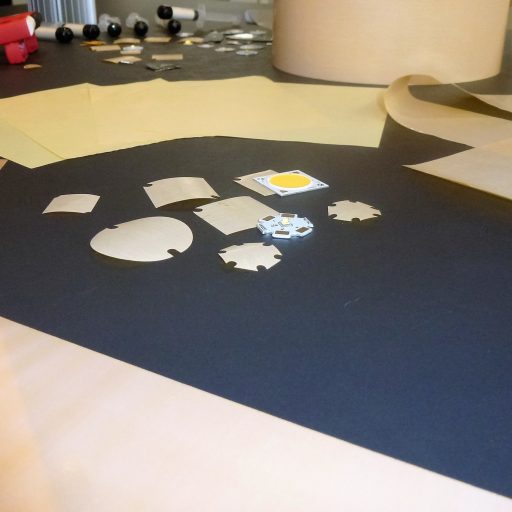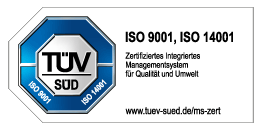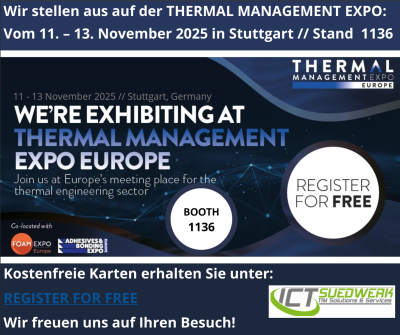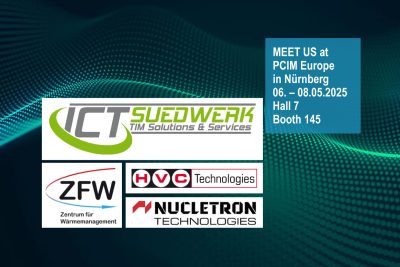Phase Change Materials (electrically insulating)
ICT SUEDWERK's thermal interface materials – electrically insulating-heat-conducting phase-change materials as very thin films/films are ideal for applications where a greatly reduced contact resistance is required between the metal surfaces of the power semiconductor and the heat sink.
Phase Change Materials (electrically insulating)
The increase in the complexity of technical devices, modules or even individual components is the focus of the aspects of reliability, durability and thus the costs of exchange and revision work. Especially in the focus here is of course the power density in power electronic components which has steadily been increasing for years; A direct and decisive influence on the entire service life of semiconductor components is therefore more than ever the effective cooling, because the heat flux as a measure for the dissipated heat per area unit is usually the critical value at the macro level and responsible for the resilience of the application.
This is precisely why the developers today evaluate the thermal path much more critically than was the case a few years ago. For example, the optimum thermal connection of two contact surfaces to be connected requires a very good knowledge of the interface, because precisely here the real need for so-called interface material must be determined when connecting the component to the heat sink.
In fact, materials are often used for this, which do not always correspond to the application and do not always meet the increasing requirements. So-called phase changing heat conducting interface materials offer the optimal solution here. These plastic substrate carriers, based on thin film coating, are ideally suited for the cooling of power semiconductors in modular design and high-power LEDs.
Of pure interface materials is usually spoken whenever substrate layer thicknesses of less than 0.20 mm can be used in the application.
ICT SUEDWERK's heat-conducting phase-change materials wetting the unavoidable surface roughnesss during softness above the phase change temperature, and expel air pockets from the micro pores of the surface. Due to the fact that type-dependent phase change materials extend with increasing temperature volumetric, the wetting of the contact surfaces is additionally improved.
Due to the liquefaction and expansion as well as the capillary effect, so-called air pockets between the thermally contacting interface are expelled or pressed out. The first overrun of the phase change temperature is sufficient and a permanent thermal contact is established, which is then kept constant over and under the phase change temperature. Due to the full-surface wetting, the thermal connection to the conventional is therefore superior to variants and the resulting thermal resistance is significantly lower. The different phase change materials can also be ordered in several different variants:
- As standard variant Polyimide and Kapton MT and MT + substrate carrier of different thicknesses and in phase change coating
- As a one-sided phase change variant which also has a high electrical insulation and reduces the thermal transmission resistance.
Heat conducting interface materials are available in silicone-free format. Due to the high dielectric strength of this product group, a galvanic separation is possible in other words an electrical isolation from a low layer thickness, which is why this product category is also classified as electrically insulating.
Phase-Change How does this process work?
When the temperature approaches the defined phase change point, the material changes its aggregate state and passes from the solid, dry to the soft to liquid state. Unavoidable surface roughness are balanced, air pockets are expelled from the micro pores of the surface. In addition, the fact that phase change materials expand volumetric when the temperature increases, the wetting of the contact surfaces is additionally improved. Convex and concave unevenness of the contact surfaces and tolerances can thus be mastered very well.
Comparison table
| Property | ICT-Dp60 | ICT-Up60 |
|---|---|---|
| Thermische Eigenschaften | ||
| Operating temperature | from -60 to 140 °C | from -60 to 140 °C |
| Thermally conductive | Yes | Yes |
| Thermal conductivity | 0.45 W/m*K | 0.78 W/m*K |
| Thermal resistance (inch² / 645,16mm²) | 0.120 .. 0.290 K/W | 0.78 .. 0.85 K/W |
| Elektrische Eigenschaften | ||
| Dielectric strength | 6000 kV (AC) | 7,1 kV (AC) |
| Dielectric breakdown voltage | 6000.00 kV/mm | - |
| Electrically conductive | No | No |
| Allgemeine Eigenschaften | ||
| UL flammability rating | 94 V0 UL | 94 VO UL |
| Color | Orange (matte) | Yellow |
|
|
|
|





